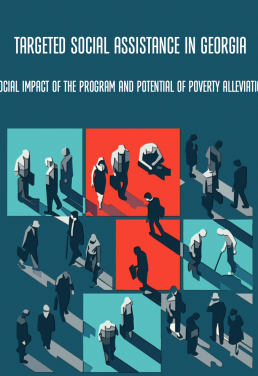According to assessments by international partners, compared to similar programs in Europe and Central Asia, Georgia's Targeted Social Assistance program is one of the best in terms of covering the poorest citizens.1 Despite this, there is a debate within the local community about the program's methodological flaws and, more generally, its effectiveness.
After the old-age pension, the TSA program is the largest social protection program in terms of both expenditure and population coverage. As of November 2023, 375 286 families (1 206 980 individuals) are registered in the program's database, representing 35.2% of all families in the country and 32.4% of the population.2 As will be stated later in the report, the number of people registered in the program, as well as the number of aid recipients, is increasing year by year. Therefore, it is not surprising that there is widespread public interest in this program.
The purpose of this study was to analyze the shortcomings in the methodology of the program and, more generally, to assess the program's potential to end poverty in the country. The research was carried out using document analysis, in-depth expert interviews, and focus group methods. During the research process, statistical data published on the website of the Social Service Agency, as well as additional data that were requested, were also analyzed.
The report is structured as follows: Chapters one and two provide the main features of the program design and an overview of the household assessment methodology. The third chapter discusses the phenomenon of dependence on social assistance and the possibilities of lifting recipients out of poverty. The final (fourth) chapter presents a discussion on alternative mechanisms of social assistance, concluding with a brief summary.
The project is implemented by Social Justice Center in the framework of USAID Civil Society Engagement Program, funded by United States Agency for International Development (USAID).
Miznobrivi_daxmareba_170x240_ENG_WEB_1724759705.pdf
Footnote and Bibliography
1 Baum, et.al., Continuous Improvement: Strengthening Georgia’s Targeted Social Assistance Program, 2016.

